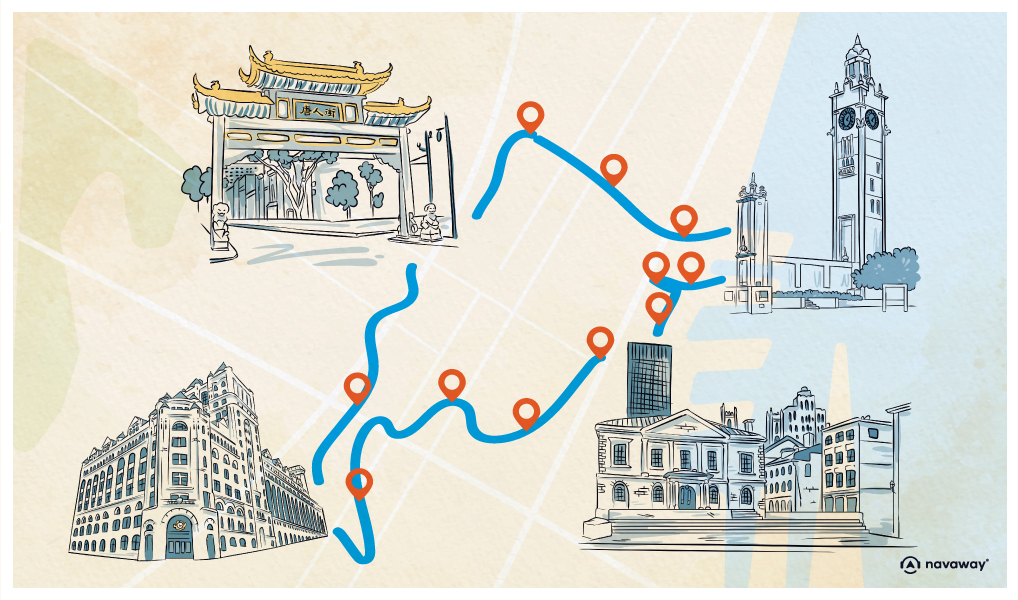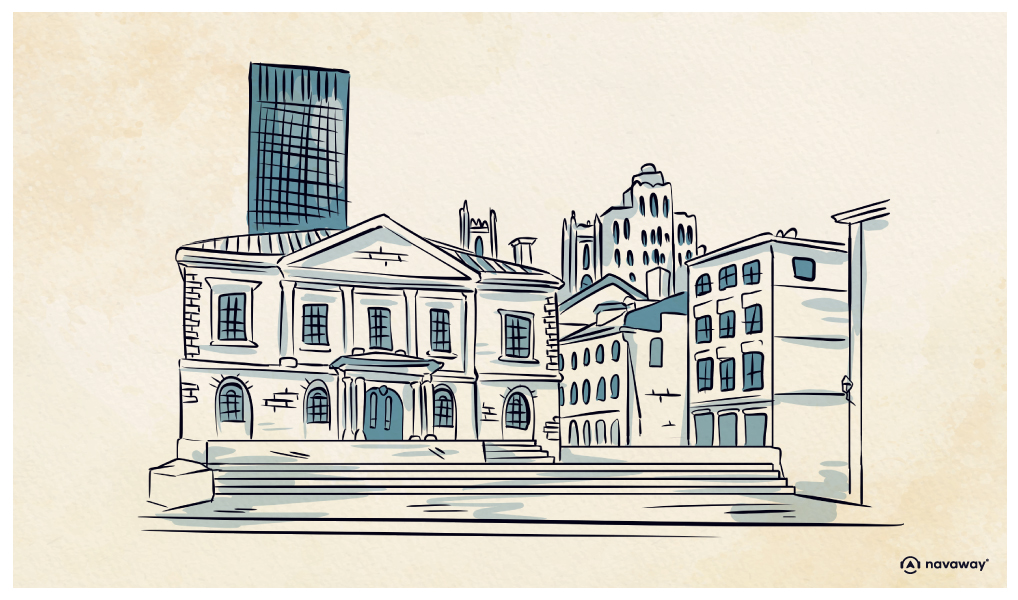
Place Royale

This point of interest is available as audio on the tour: Visit Montréal, A Touch of France in North America
You’re standing where it all began. Place Royale bears witness to over a thousand years of human presence. Let’s take a quick skip back into time. In 1535, during his second travel to Canada, Jacques Cartier landed at the semi-sedentary Iroquoian village of Hochelaga. There, he discovered about fifty houses surrounded by a circular palisade with a single entrance, and it’s estimated that around 3,000 people lived inside. While observing the landscape around the village, Cartier named the mountain Mont-Royal—which, through linguistic evolution, would eventually end up becoming Montréal. Relations between Cartier’s crew and the Iroquois were relatively peaceful, and since the French were trapped here due to winter, they stayed until the thaw allowed their ships to move again. In 1611, Samuel de Champlain—retracing Cartier’s steps to map the St. Lawrence River—came back to Hochelaga but found no trace of the village, whose exact location still remains unknown to this day. Despite the uncertainty of its location, Hochelaga is declared a National Historic Site of Canada. Champlain still thought it would be a good idea to benefit from the area’s strategic potential and cleared what is now Pointe-à-Callière to establish a fur-trading post. Thirty years later, back in France, a group called the Society of Our Lady of Montreal for the Conversion of the First Nations of New France was created. In 1642, this group sent about fifty French settlers to Canada under the leadership of Paul de Chomedey. Over there, they founded a new fortified village, “Ville-Marie”, honouring the Virgin Mary. Among them were Jeanne Mance, who would go on to found the Hôtel-Dieu—one of the first hospitals in North America—and Marguerite Bourgeoys, who became Montréal’s first teacher. The early days of Ville-Marie were difficult due to a lack of funds, frequent flooding from the St. Lawrence River, and repeated attacks from the Iroquois who were understandably reluctant to evangelization. Despite all this, the settlers held on and managed to bring in 100 new colonists, saving their fledgling town. At its peak during the French Regime, the city had become a major fur processing centre. In 1701, the Great Peace Treaty was signed between the French and the Iroquois. Just when you might think peace had finally arrived, a new threat to Ville-Marie emerged: the British. By 1744, a 6-meter-high stone wall was established to protect Old Montréal. Despite this, the city continued to grow and thrive, remaining under French control until September 8, 1760, when the military commander surrendered to the British army.. There you have it—a quick historical rewind of Montréal’s past. Now, where was I on our tour? The main building you see on the square is the old Customs House, built in the 1830s. Its façade faces the river, a reminder of the time when customs played a crucial role in the city’s economic growth.The opening of the Lachine Canal in 1825 transformed Montréal into a key gateway for goods coming from Europe. This development led to the city becoming an autonomous port, prompting the construction of the customs building. Today, it is part of the Pointe-à-Callière Montréal Archaeology and History Complex, a fitting tribute to the very spot where Montréal’s story first began.Now that we’ve gone back in time, let’s keep moving forward!


Discover Montréal with app
An interactive guide through the most beautiful streets, squares, and districts
24 fun audioguides full of historical facts, anecdotes, and legends





Comments